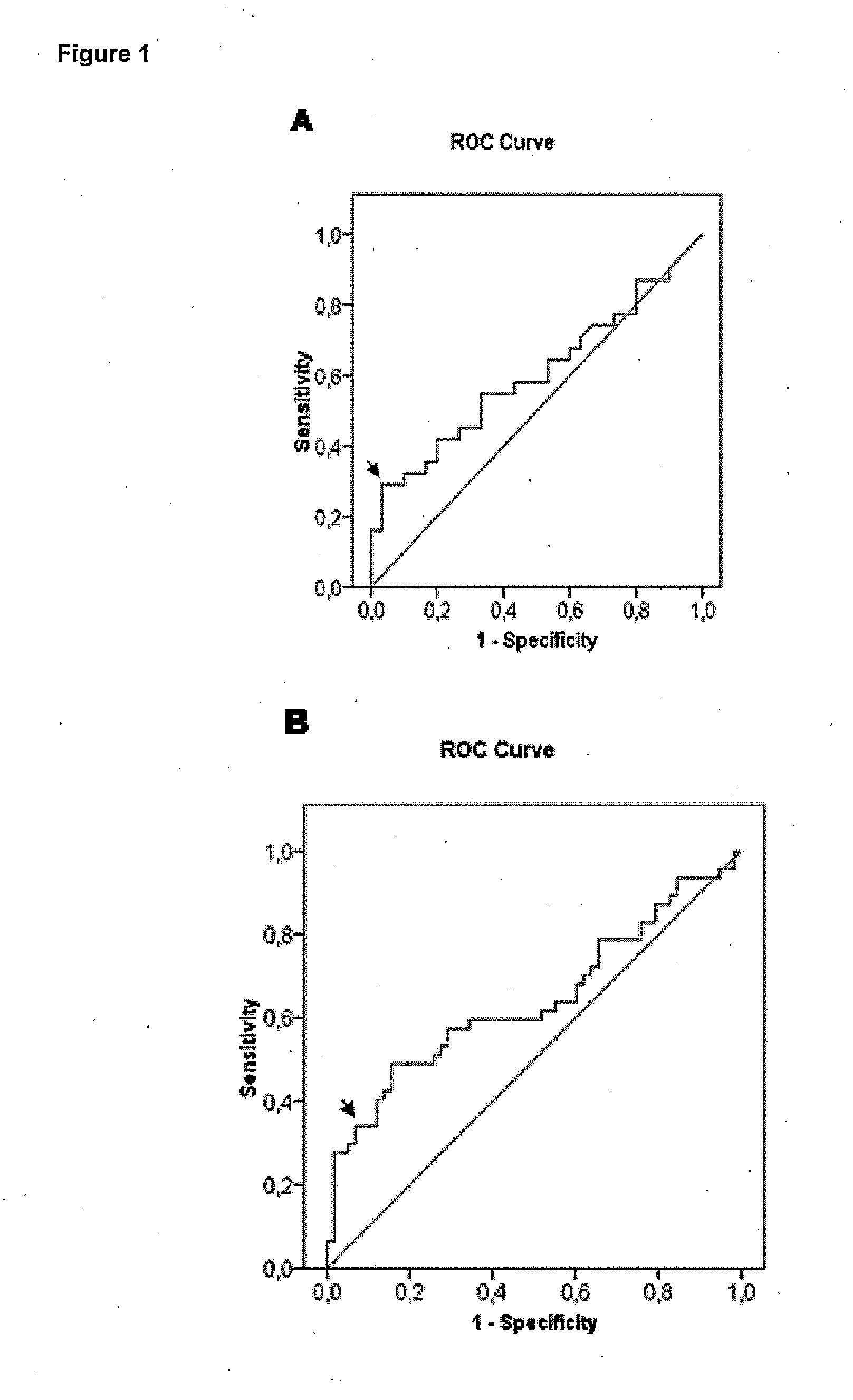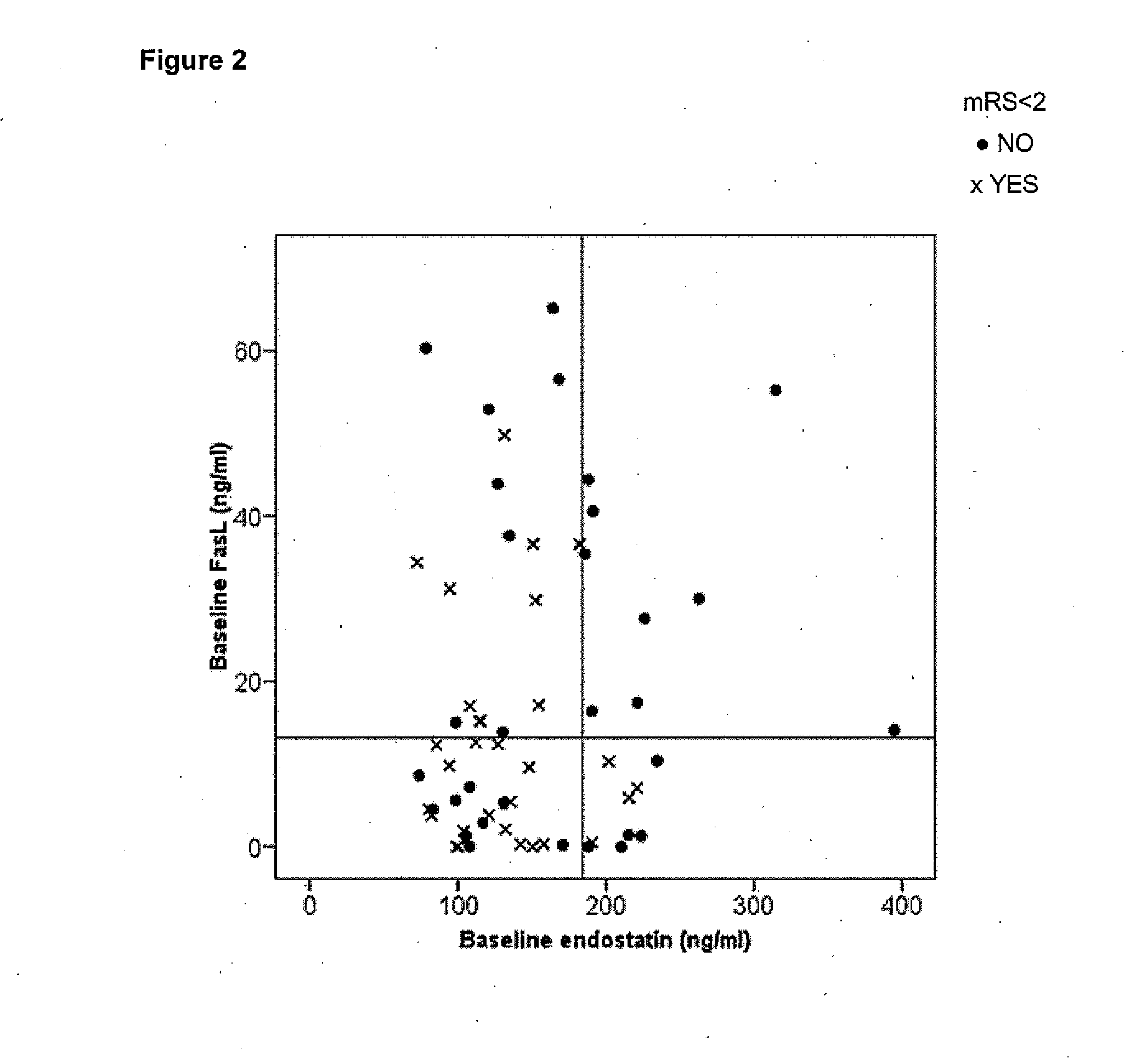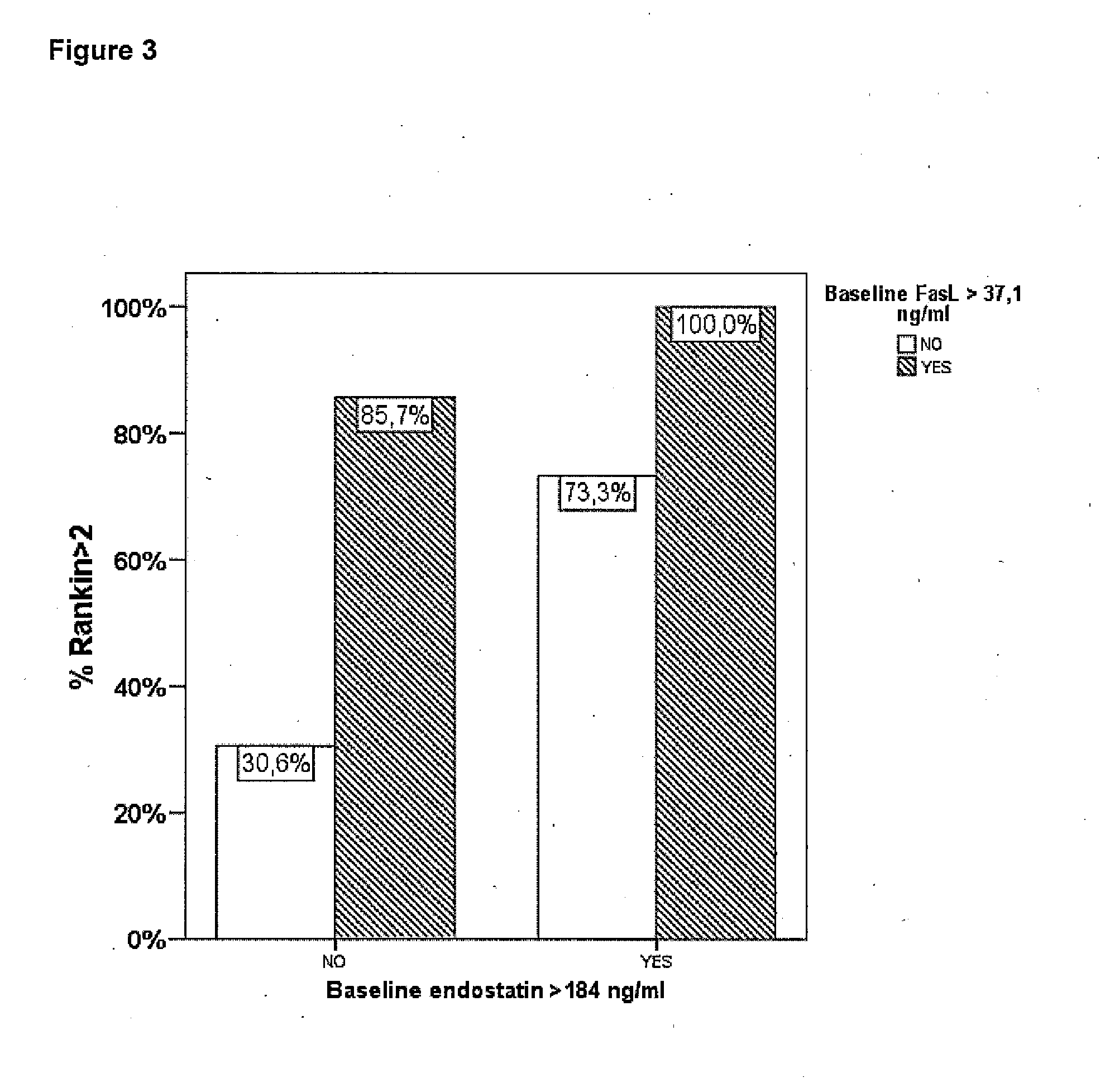Method of predicting the evolution of a patient suffering of stroke
a technology of evolution and stroke, applied in the field of predicting the evolution of stroke patients, can solve the problems of high death rate, huge mortality rate, and poor prognosis of malignant middle cerebral artery infarction, and achieve the effects of reducing the risk of strok
- Summary
- Abstract
- Description
- Claims
- Application Information
AI Technical Summary
Benefits of technology
Problems solved by technology
Method used
Image
Examples
example 1
Selection of Patients
[0053]The study included patients with an acute ischemic stroke (n=61) involving the Middle Cerebral Artery (MCA) territory, admitted in the emergency department of Hospital Vall d'Hebron, Barcelona, Spain. All patients received thrombolytic therapy in a standard dose of 0.9 mg / Kg (10% bolus and 90% continuous infusion for 1 h) within 3 h of symptoms onset. At admission, all patients underwent a Cranial computed Tomography (CT) scan and a second CT scan was repeated 24 to 48 h later (or earlier when rapid neurological deterioration occurred) to evaluate the presence and type of Hemorrhagic Transformation (HT), that was defined according to previously published criteria (Hacke et al., Thrombolysis with alteplase 3 to 4.5 hours after acute ischemic stroke. N Engl J Med. 2008; 359:1317-29, Pessin 1990). Transcranial Doppler (TCD) measurements were performed by an experienced neurologist, blinded for laboratory results, with the use of a Multi-Dop X4 TCD (DWL Elektr...
example 2
Determination of Cut-Off Values for Endostatin and FasL
[0057]Different demographic, clinical variables and risk factors were associated with good (mRS≦2) and poor outcome (mRS>2) in stroke population. Table 3 shows the clinical, demographic characteristic and biomarker levels associated to stroke functional outcome (mRs2) at three months and shows the analysis of factors influencing stroke functional outcome together with those biomarkers. The analysis of factors influencing stroke functional outcome (mRS>2) was assessed by Mann-Whitney test.
TABLE 3GlobalRank Rank > 2P-valueAge70.44 ± 12.6 (36-94)68.13 ± 13.372.68 ± 11.70.097Sex (women)29(47.5%)46.70%48.40%0.893Tobacco11(19.6%)28.60% 10.7%0.093HTA36(59%)56.70%61.30%0.714DM15(24.6%)20.00%29.00%0.413ACxFA23(37.7%)26.70%48.40%0.008*Ischemic11(18%)16.70%19.40%0.785cardiopathyDyslipemia15(25%)23.30%26.70%0.766Previous9(14.8%)10.00%19.40%0.303strokeAplatelet20(33.3%)27.60%38.70%0.361Statin13(21.3%) 20%22.60%0.806ADO12(21.8%)17.20%26.90%0...
example 3
Sensitivity of Endostatin and FasL
[0060]To calculate the sensitivity and specificity for biomarker cut-off values to predict stroke outcome, a receiver operator characteristic (ROC) curve was configured to establish the cut-point of endostatin and FasL with the optimal sensitivity and specificity predicting unfavourable outcome (mRS<2). Selected biomarkers were modelled as dichotomous variables (with the cut-off values obtained from the ROC curves), and other variables such as NIHSS score, baseline proximal occlusion and age were included as continuous variables in different logistic models. Finally, three logistic regression analyses were performed to determine the factors that could be considered as independent predictors of unfavourable outcome using the forward stepwise method by the likelihood ratio test. An equation from the regression model was performed to calculate the predictive probability of dependency at three months. A p value<0.05 was considered significant.
[0061]A 18...
PUM
| Property | Measurement | Unit |
|---|---|---|
| time | aaaaa | aaaaa |
| etiologically heterogeneous | aaaaa | aaaaa |
| resistance | aaaaa | aaaaa |
Abstract
Description
Claims
Application Information
 Login to View More
Login to View More - R&D
- Intellectual Property
- Life Sciences
- Materials
- Tech Scout
- Unparalleled Data Quality
- Higher Quality Content
- 60% Fewer Hallucinations
Browse by: Latest US Patents, China's latest patents, Technical Efficacy Thesaurus, Application Domain, Technology Topic, Popular Technical Reports.
© 2025 PatSnap. All rights reserved.Legal|Privacy policy|Modern Slavery Act Transparency Statement|Sitemap|About US| Contact US: help@patsnap.com



